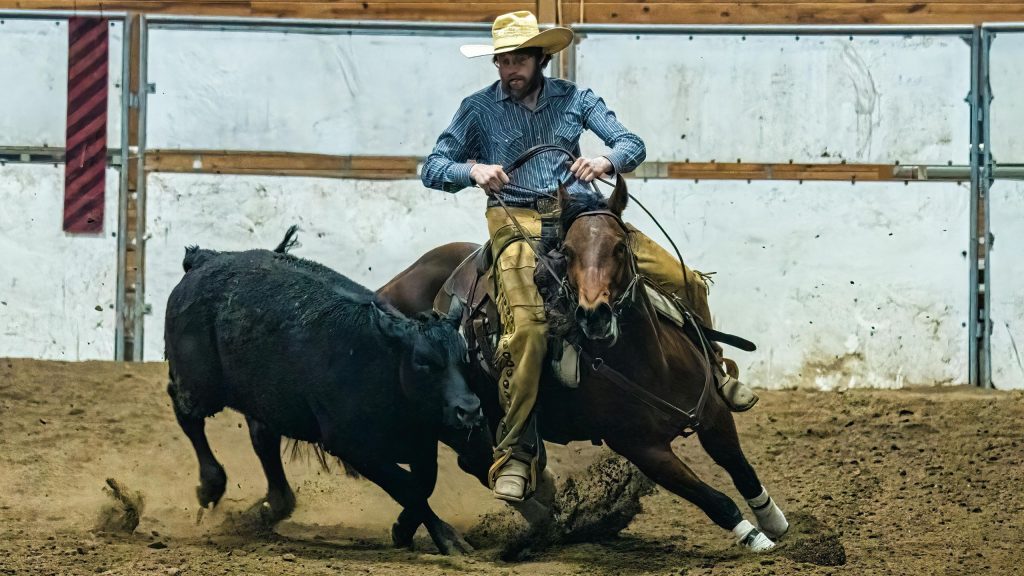Becoming a bull rider takes immense physical capability, fearlessness, and determination. As a competitive sport, bull riding involves staying mounted on a bucking bull for 8 seconds while the animal tries to throw you off.
It’s an extreme test of balance, strength, endurance and mental grit. For adrenaline seekers looking for a truly challenging rodeo sport, here’s how to break into bull riding in the UK.
Understand What Bull Riding Entails
Before pursuing bull riding, make sure you fully comprehend what’s involved:
- Riding 2,000 lb bulls that aggressively twist, kick, and buck trying to throw you off
- Maintaining balance and control for 8 seconds without being dislodged
- Avoiding serious injury when thrown to the ground or struck by hooves and horns
- Developing the core, leg, and grip strength to withstand intense physical battering
- Blocking out fear and focusing mentally while facing extreme danger
- Recovering from inevitable bruises, strains, breaks, and fractures
- Committing to ongoing conditioning, training, and skill practice
- Potentially relocating to pursue opportunities if limited locally
While thrilling, bull riding requires accepting substantial risk and discomfort. Ensure you’re willing to endure the demands.
Take Bull Riding Lessons
Before competing, start by taking lessons from qualified instructors at a reputable bull riding school. You’ll learn proper:
- Basic bull riding techniques and mechanics
- Safety protocols and protective gear usage
- Fitness training and conditioning methods
- Mental preparation for controlling fear
- Approaches for avoiding/reducing injury risk
Lessons prepare you and help determine if you have the physical abilities and temperament for bull riding.
Get in Peak Physical Condition
Bull riding demands tremendous athleticism, coordination, and strength. Dedicate significant time to:
- Cardio – Run, swim, hike, bike, and use cardio machines to build endurance.
- Core – Do planks, crunches, and Pilates to strengthen your core muscles and midsection.
- Grip – Use hand squeezers and resistance bands to develop a vice-like grip needed to cling to ropes.
- Legs – Squats, lunges, and calf raises build lower body power.
- Flexibility – Stretch regularly to increase mobility and prevent strains.
- Diet – Eat plenty of lean protein to support muscle growth and recovery.
Physical preparation is ongoing – even professionals maintain rigorous year-round conditioning programs.
Master Key Bull Riding Techniques
Once in adequate shape, focus on mastering essential skills like:
Climbing – Fluidly pull yourself up onto the bull while it’s still in the chute using correct form.
Body positioning – Keep your torso upright, head forward, and legs cocked around the bull’s front shoulders.
Balance – Find your center of gravity and adjust your hips to compensate for bull movements.
Grip – Hold the bull rope tightly with your riding hand, keeping your arm up.
Spurring – Drag your spurs along the bull’s neck and shoulders to score points.
Dismounting – Release your grip and move your body away from the bull once the whistle blows.
Repetition develops key muscle memory needed for control during those 8 seconds.

Acquire the Needed Safety Gear
Bull riding necessitates wearing protective equipment:
- Helmet – Essential to protect your head from impacts if thrown or trodden on. Look for certified models with face shields.
- Vest – Typically made from high-impact foam padding to guard your torso and back from impacts.
- Mouthguard – Prevents dental injuries and concussions by absorbing shock. Custom-fitted is best.
- Gloves – Provide grip assistance and protect hands from blisters and calluses.
- Bull rope – Sturdy rope with handhold knot you grip while riding. Usually made from braided nylon or grass.
Don’t ride without the proper safety attire. Replace any damaged or worn gear immediately.
Know How to Handle Falls
When you inevitably get thrown off, having the right response is critical to avoid serious injury:
- Tuck your chin so you don’t whip your head forward onto the ground.
- Keep your mouth closed so you don’t bite your tongue or lips.
- Land flat on your back to disperse impact – avoid falling directly on joints.
- Momentarily relax your muscles on impact to avoid fractures.
- Don’t try to stand up too quickly – catch your breath first.
- If the bull charges at you on the ground, roll under the arena fence for protection.
With training, getting thrown can become an automatic cue for your body to go into safe fall mode.
Compete in Amateur Rodeos
Once you’ve developed sufficient skill through lessons, start competing at local low-stakes rodeos. This intermediate step ups the stakes while allowing you to gain real bull riding experience before professional entry.
- Enter competitions approved by organizations like the British Rodeo Cowboys Association.
- Travel to rodeos offering amateur or novice bull riding events.
- Get accustomed to riding in front of crowds in a high-pressure setting.
- Scope out and meet seasoned bull riders who compete at the professional level.
- Keep training and adjusting your technique based on each ride.
Think of amateur rodeos as extended education to hone abilities in real bull riding scenarios.
Train with an Experienced Mentor
To take your skills to the next level, find a pro bull rider willing to mentor you individually. A qualified coach can observe your technique and provide invaluable advice, such as:
- Recommending stance, grip, and motion adjustments
- Suggesting when to use certain skills like spurring
- Reviewing your rides to pinpoint weaknesses
- Designing a personalized training plan
- Preparing you mentally for professional competition
- Exposing you to elite riding spots for practice
One-on-one training creates a fast track for skill refinement based on expert guidance.
Develop Mental Toughness
Equally as important as physical prowess is cultivating an unflappable mindset:
- Visualize successfully riding bulls to program your subconscious.
- Address any fears or self-doubt through affirmations and positive thinking.
- Stay intensely focused before and during each ride – ignore distractions.
- Learn relaxation and intentional breathing techniques to control nerves.
- Cultivate mental grit and self-belief through daily mindfulness or meditation.
- Immerse yourself in positive motivational books and speeches.
Bull riding confidence ultimately comes from within. Build mental muscle through dedicated psychological training.
Join Relevant Professional Associations
Getting involved with organized bull riding groups provides support and opportunities:
- British Bull Riding Association – Governing body that hosts events and provides insurance.
- Professional Bull Riders (PBR) – Leading bull riding organization hosting premier events worldwide.
- Professional Rodeo Cowboys Association (PRCA) – Sanctions rodeo events across North America.
- International Professional Rodeo Association (IPRA) – Europe and UK-based rodeo and bull riding events.
Reputable associations offer competition opportunities, rankings, access to coaches, and more.
Build Your Profile
As you establish yourself, work on building your public rider profile:
- Create a website highlighting your bull riding career, achievements, schedule, merch, and endorsements.
- Post videos of your best rides on YouTube and social media so fans can follow along.
- Distribute promotional items like t-shirts with your brand and handle at events.
- Attract sponsors who can provide financial backing and gear in exchange for branding.
- Engage with bull riding fanbases through profiles, fan pages and forums.
- Participate in interviews to share your story and passion for the sport.
A compelling personal brand helps attract event invitations, sponsorship deals, and merchandising options.
FAQs About Becoming a Bull Rider in the UK
1. At what age can you start bull riding?
Answer: You must be over 18 to compete professionally. However, some junior rodeo associations allow teenage competitors ages 13-18 with parental consent. Beginner lessons can start earlier under supervision.
2. How often do serious injuries occur in bull riding?
Answer: While dangerous, serious injuries aren’t extremely common with proper safety protocols. But minor-moderate bruises, fractures, sprains, and concussions do frequently occur. Wearing protective gear greatly reduces risk.
3. What is the average career length for bull riders?
Answer: The average career is only 3-5 years due to the physical demands. But elite bull riders can compete professionally past the age of 40 with extended careers spanning 10+ years if they avoid major injuries.
4. How much do professional bull riders earn?
Answer: Annual incomes average £25,000-£100,000 but top riders can earn over £1 million per year through competitions, sponsorships, endorsements, and licensing deals.
5. Do you have to be extremely muscular to bull ride?
Answer: Leaner, flexible muscle is more important than bulk. Successful riders have strong cores, grips, and legs without compromising mobility. Heavy muscle mass can actually hinder required movement.
Conclusion
If you have the drive to defy fear and push your body to the limits, bull riding may be the ultimate thrill sport. It takes tremendous physical skill, stamina, heart, and mental resolve.
But with proper training under seasoned riders along with relentless conditioning and technique practice, it’s possible to break into professional bull riding competitions. Always put safety first while developing natural balance and the instincts to react during those action-packed 8 seconds atop a bucking bull.
For daredevils searching for the ultimate adrenaline rush outside of ordinary life, bull riding offers the ultimate test.

